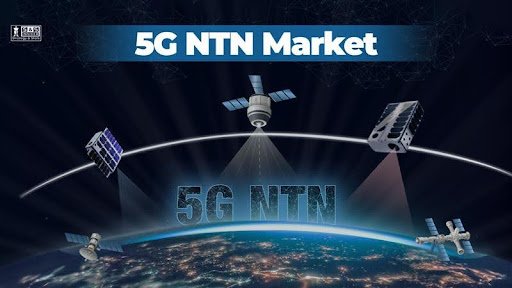
How 5G NTN Technology Is Revolutionizing Global Connectivity
- Business
- October 16, 2025
- No Comment
In an era where seamless connectivity drives innovation, the emergence of 5G Non-Terrestrial Networks (NTN) is redefining the limits of communication. As the next evolution in mobile technology, 5G NTN bridges the gap between terrestrial and satellite systems, ensuring that high-speed, low-latency connectivity reaches even the most remote and underserved regions of the world. From autonomous transportation to remote sensing and maritime communication, this new infrastructure promises to create a unified digital ecosystem that connects everyone and everything, everywhere.
The integration of satellite systems into the 5G ecosystem marks a fundamental shift from the traditional cellular approach. Unlike conventional networks that rely on ground-based infrastructure, NTN leverages Low Earth Orbit (LEO), Medium Earth Orbit (MEO), and Geostationary (GEO) satellites to extend network coverage beyond urban centers. This approach has not only addressed the long-standing connectivity gap in rural areas but also paved the way for new applications across defense, logistics, and emergency communication sectors.
The 5G NTN Market was valued at USD 5.5 Billion in 2023 and is expected to reach USD 77.9 Billion by 2032, growing at a CAGR of 34.14% from 2024-2032. This exponential growth reflects a paradigm shift in global connectivity, driven by the increasing demand for uninterrupted communication across air, land, and sea.
Contents
The Rise of Non-Terrestrial Networks in the 5G Era
The world’s reliance on digital networks has reached unprecedented levels. While 5G terrestrial networks have revolutionized communication across metropolitan regions, they often struggle to deliver consistent coverage in remote or geographically challenging areas such as mountains, deserts, and oceans. Non-Terrestrial Networks—supported by satellites, high-altitude platforms (HAPs), and unmanned aerial systems—offer a complementary extension to traditional infrastructure, ensuring that connectivity is not constrained by terrain or distance.
LEO satellite constellations, in particular, have become the backbone of 5G NTN. Their low orbit allows for faster data transmission and reduced latency compared to conventional GEO satellites. This makes them ideal for time-sensitive applications like autonomous driving, real-time video streaming, and remote healthcare operations. Companies such as SpaceX, OneWeb, and Amazon’s Project Kuiper are investing heavily in building these constellations, further accelerating the deployment of global 5G NTN networks.
Driving Forces Behind the Growth of 5G NTN
Several factors are contributing to the rapid adoption of 5G NTN technology. One of the most significant is the increasing demand for universal coverage, particularly in areas where terrestrial networks are economically unviable. Government agencies and private operators alike are prioritizing the development of hybrid communication models that integrate both satellite and terrestrial components.
Additionally, the rise of Internet of Things (IoT) ecosystems has amplified the need for always-on connectivity. With billions of sensors, devices, and machines communicating in real time, terrestrial-only infrastructure often fails to deliver the required reliability. NTN provides a global framework for IoT connectivity, enabling use cases such as cross-border logistics, environmental monitoring, and global asset tracking.
Moreover, the evolution of cloud computing and edge networks complements the growth of 5G NTN. By integrating edge nodes within satellite networks, data processing can occur closer to the source, reducing latency and improving efficiency for critical operations like disaster response or drone coordination.
Transformative Applications Across Industries
The transformative potential of 5G NTN spans multiple industries. In aviation, the technology enables uninterrupted communication between aircraft and ground control, improving safety and navigation. In maritime operations, it ensures continuous internet access for ships and offshore platforms, enhancing fleet management and passenger experience.
For defense and public safety, NTN serves as a resilient communication backbone that remains functional during natural disasters or geopolitical disruptions—when terrestrial infrastructure might be compromised. Meanwhile, in automotive and transportation, 5G NTN supports the expansion of connected vehicles and autonomous systems that rely on ultra-reliable, low-latency communication.
Another rapidly growing application is in remote healthcare, where satellite-based 5G networks are allowing telemedicine, diagnostics, and patient monitoring in rural regions. Similarly, in agriculture, farmers can now access real-time weather updates, soil data, and crop monitoring insights through connected devices powered by NTN coverage.
Overcoming Technical and Regulatory Challenges
Despite its immense potential, the path to large-scale 5G NTN deployment is not without challenges. Spectrum allocation remains one of the key regulatory hurdles, as the demand for radio frequencies grows rapidly with the expansion of satellite-based systems. Coordination between national and international agencies is critical to avoid interference and ensure fair spectrum distribution.
On the technical front, ensuring seamless interoperability between terrestrial and non-terrestrial networks is essential. 5G NTN systems must deliver consistent performance even as users transition between coverage zones. Advances in beamforming technology, dynamic resource allocation, and intelligent routing are helping to mitigate these challenges.
Energy efficiency also plays a crucial role, as satellite systems traditionally consume more power than terrestrial infrastructure. Innovations in low-power transmission, lightweight antennas, and energy-efficient payloads are making 5G NTN more sustainable and scalable for the long term.
The Road Ahead: A Truly Connected Planet
The coming decade will mark a turning point for global communication. With 5G NTN at the forefront, the world is moving toward universal digital inclusion, where connectivity is no longer a privilege but a fundamental right. Governments, telecom operators, and technology companies are joining forces to build a resilient communication ecosystem that ensures every region, regardless of its geography, remains connected to the global digital economy.
As satellite constellations grow denser and technology becomes more efficient, the boundaries between terrestrial and non-terrestrial networks will continue to blur. The integration of 6G research, artificial intelligence, and edge computing will further elevate NTN capabilities, enabling intelligent, adaptive, and secure communication infrastructures.
In conclusion, 5G NTN represents more than just an upgrade in network technology—it’s a vision of a seamlessly connected world. From remote villages to deep oceans and high-altitude skies, its reach extends far beyond what traditional networks could ever achieve. With rapid innovation and global collaboration, the future of 5G NTN is not just about faster speeds—it’s about connecting humanity everywhere, without boundaries.




